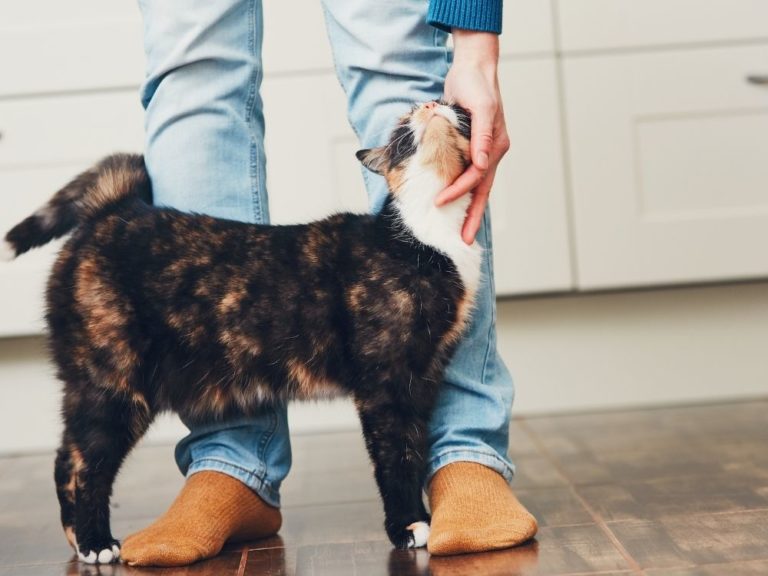Have you ever found yourself looking at your feline buddy and wishing you could understand what they were trying to communicate to you? Understanding what is going on your kitty’s mind can seem like a difficult task, but in reality, all you need to do is to understand the signs and signals that cats use to communicate.
One of the main ways cats communicate is through behaviors such as rubbing, licking, and kneading. These behaviors are especially crucial in communicating affection or possessiveness. Cats also communicate through vocalization, and using their eyes, but there are more communication signals that cats employ, which we’ll look at below.
28. Behavior: Rubbing
When your cat rubs their head and body against you, two things are happening. First, this is a way of bonding with you. It is a show of affection.
Second, by rubbing themselves against you, they are claiming you and basically saying that you belong to them. When cats rub against you, they transfer their scent onto you. When other cats smell your cat’s scent on you, this, in effect, tells them that you’re taken.
27. Behavior: Licking
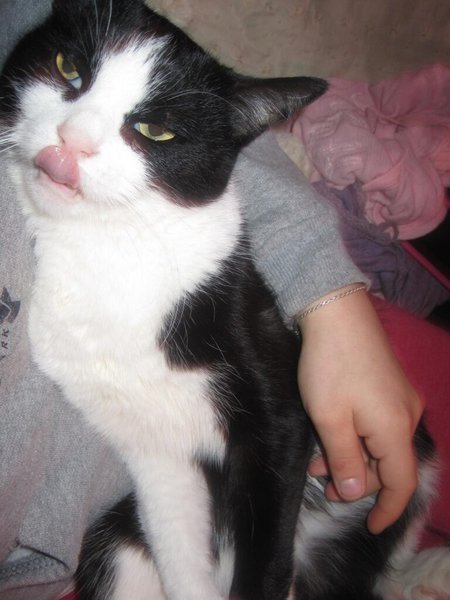
When your cat was a kitten, their mother used to lick them, not only in a bid to groom them, but also to bond with the kitten and show their affection. As your cat grows up, they associate licking with bonding and affection.
Therefore, if your ball of fur loves licking you, they are simply saying that they love you. Unfortunately, licking can be uncomfortable because of the tiny hooks on a cat’s tongue.
26. Tail: Lowered And Tucked
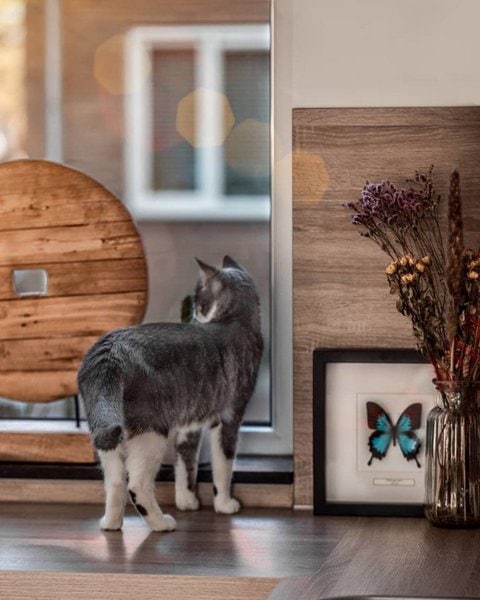
When you notice your cat’s tail held lower than the horizontal level of their back, this is a sign that your kitty is not in a good mood. If the tail is lowered and tucked between the cat’s legs, this is a sign that the cat is feeling nervous or threatened.
When your cat’s tail is held in this position, they can get aggressive if their fear gets the better of them, so don’t do anything to spook them.
25. Tail: Straight And Erect
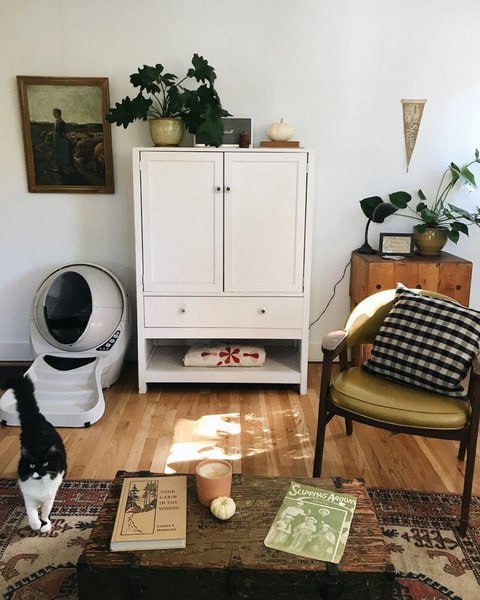
When your cat’s tail is held straight and erect, this means that your feline buddy is feeling confident and content in their environment. This usually happens when the cat is strolling around their territory.
When the tail is held straight and erect, but with a slight curve at the top tip, it also communicates that your kitty is feeling friendly and does not mind socializing, especially if you have guests at home.
24. Tail: Twitching
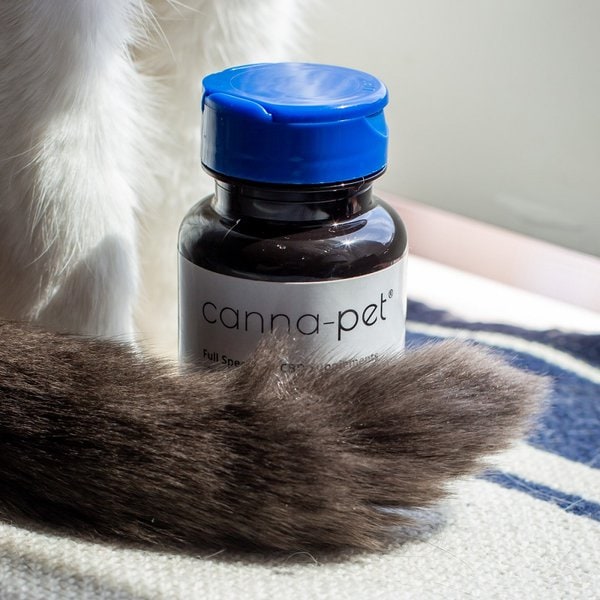
Sometimes, your cat’s tail will be held upright, but with the tail tip twitching or vibrating. This can communicate a number of things, including impending aggression, curiosity, or stalking.
If you notice your cat’s tail twitching, you should look at other signals from your cat to help you figure out what is going on in their mind. For instance, if the twitching tail is accompanied with an arched back, this shows your cat is about to attack.
23. Tail: Wagging
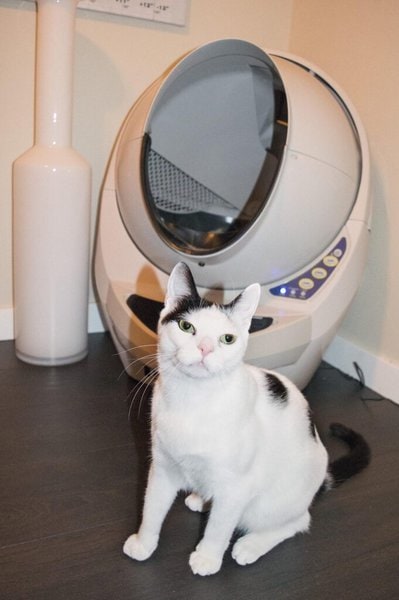
A cat’s tail wagging from side to side can mean two things. If the tail is wagging rapidly, this is a sign that your cat is feeling threatened and is about to get aggressive. If you notice this signal, it is best to stay away from the cat.
If the tail is swishing slowly from side to side, this is a sign of focus. This usually happens when the kitty is ready to pounce on something.
22. Body: Arching Its Back
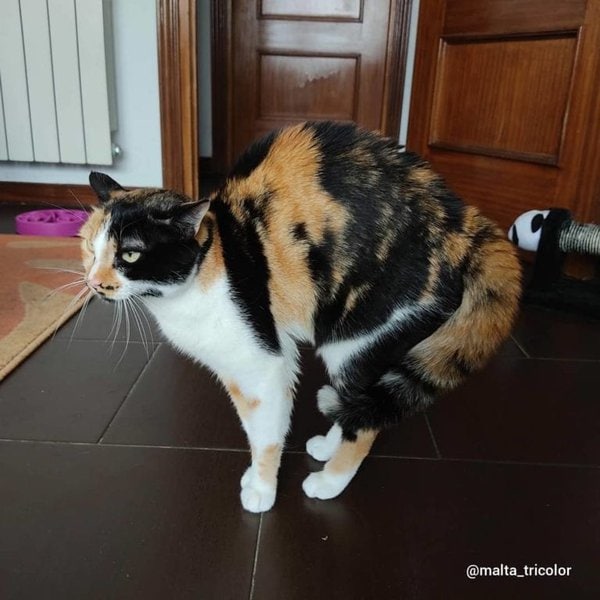
Cats arch their back for a variety of reasons. A cat will arch their back as a way to stretch their muscles after taking a nap, or when they are engaged in play with another cat or even their owner.
Sometimes, however, cats will arch their back when they are feeling threatened and are about to get aggressive. In such instances, the arched back will be accompanied by their hair standing erect all over their body.
21. Body: Crouching
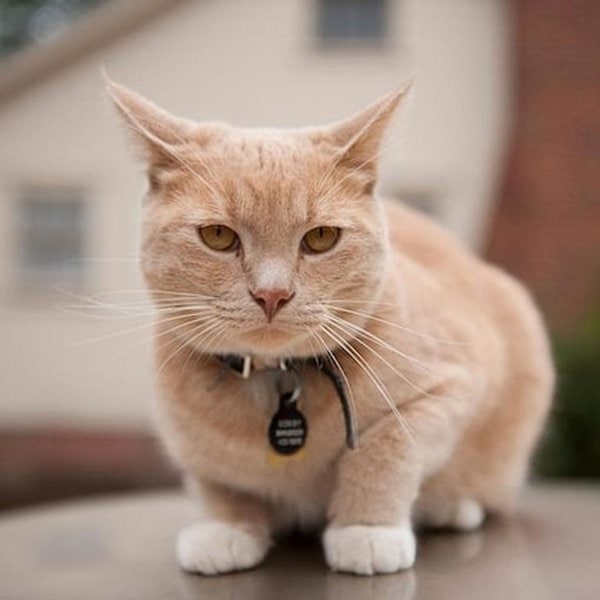
In most cases, crouching means your cat is not comfortable in their current situation. By crouching, your cat is getting ready to either defend themselves, or flee from the situation. Cats will also crouch when they are hunting and readying themselves to pounce on something.
When the crouching is due to fear, you’ll also notice that your cat’s eyes will be wide open with the pupils constricted into slits, and the tail held erect.
20. Body: Loafing
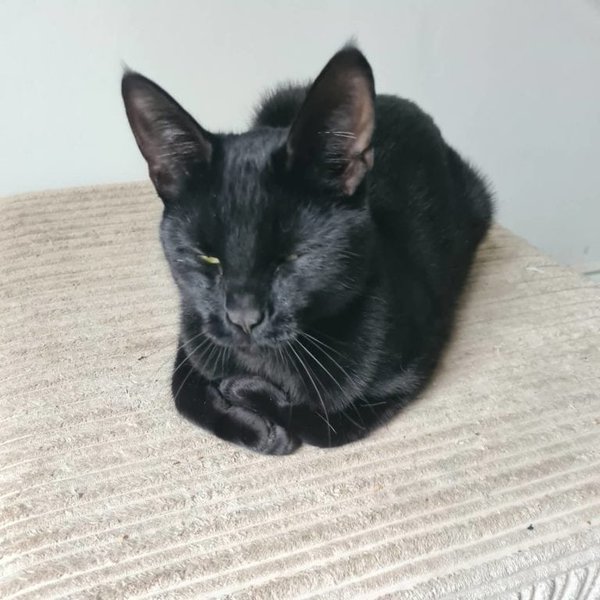
Cats are said to be in a loafing position when they sit with their paws tucked underneath them. This body position communicates that your four-legged buddy is relaxed. In this position, they are not feeling nervous or threatened.
Sometimes, cats will also sit in the loafing position when they want to preserve their body heat, or if they have an injured forepaw that they are trying to protect.
19. Body: Lying On Its Back And Exposing Its Belly
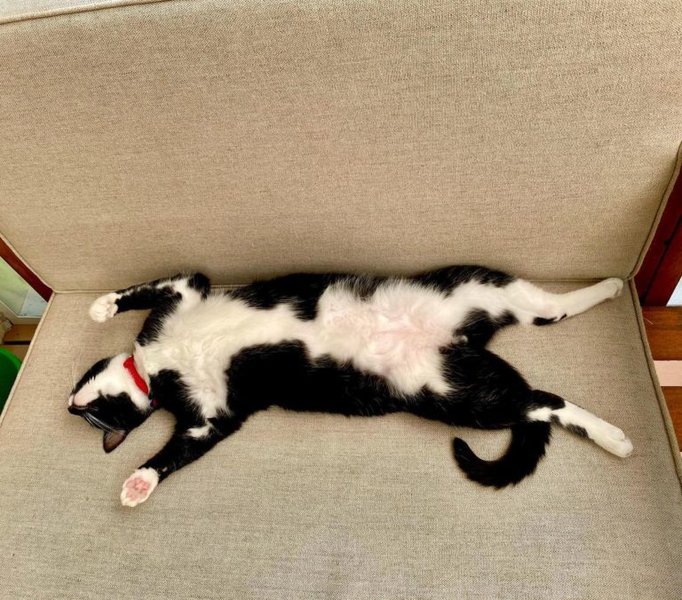
Lying on their back with their belly exposed is one of the greatest signs of trust in cats. The belly is a vulnerable area, and therefore, when your cat lies down exposing the belly, they are comfortable and relaxed and feel safe around you.
Unlike with dogs, however, this is not an invitation to pet your cat’s belly. Cat’s bellies are overly sensitive, and if you try touching this area, some cats will attack.
18. Body: Standing And Moving Sideways
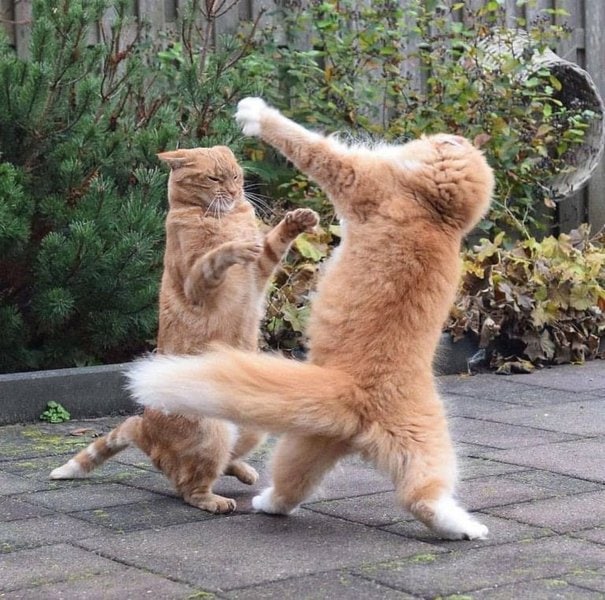
If you notice your cat standing and moving sideways, this is a sign that they are fearful or feel threatened.
By standing and moving on their side, they are trying to make their profile appear bigger so as to intimidate or scare whatever they consider to be a threat. In most cases, this behavior will be accompanied by other warning signs, such as erect hair, growling, hissing, and an arched back.
17. Body: Wiggling Of Body And Butt
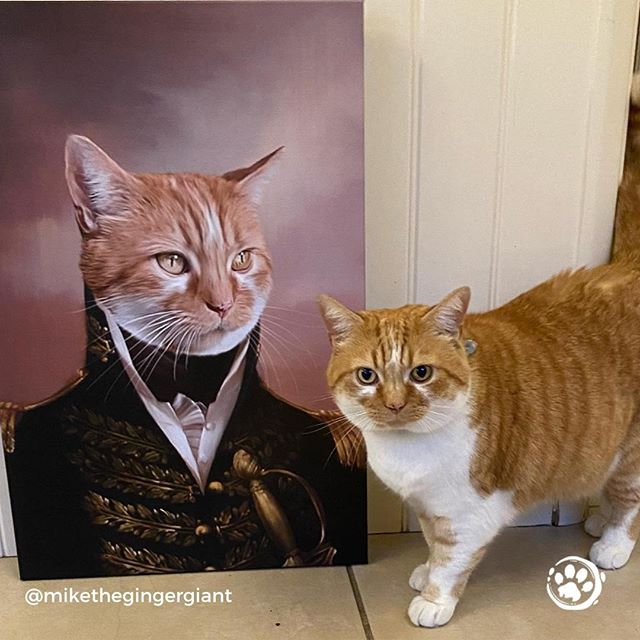
When cats wiggle their body and butt, this is usually a sign that they are preparing to pounce on something. The behavior will usually be accompanied by a tail that is slowly swaying from side to side.
So, why do cats do this? By wiggling their body and but, your cat is trying to maximize traction in the hind legs and find the best angle that will allow them to spring for a pounce.
16. Face: Whiskers Pulled Forward And Fanned Out
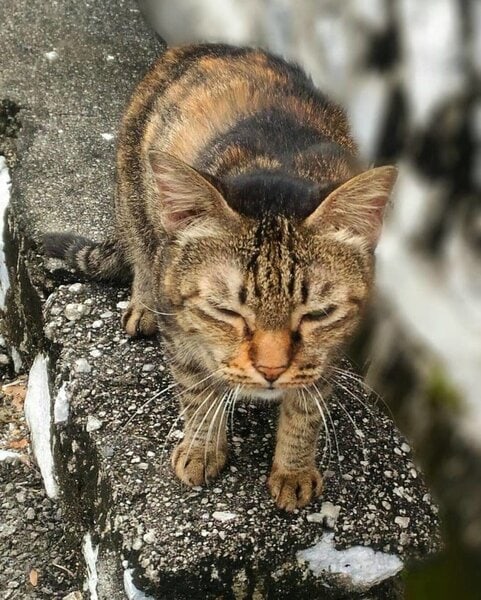
When your feline buddy has their whiskers pulled forward and fanned out, this is a sign that the cat is excited, or that they are greatly interested in something. You’ll also notice that their mouth will be closed, with the lips held loose.
Cats will also pull their whiskers forward and fan them out when they are hunting. In these situations, the whiskers help increase the cat’s perception of its environment.
15. Face: Whiskers Pulled Back
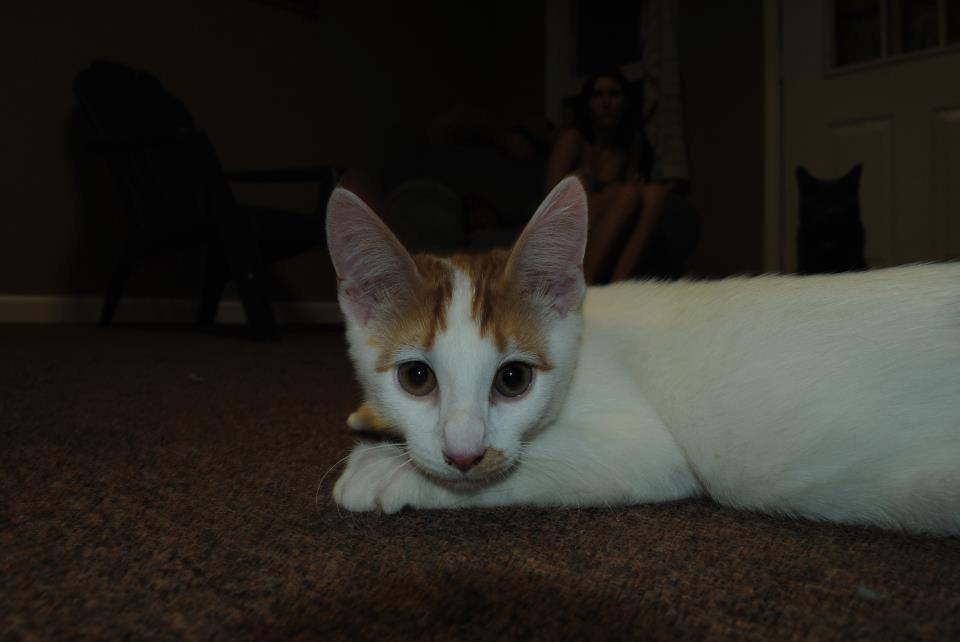
When your cat’s whiskers are pulled back, this is a sign that your furry buddy is anxious, stressed, or fearful. By pulling their whiskers back, your cat is trying to make themselves appear as small as possible to avoid confrontation with whatever they consider to be a threat.
When the whiskers are pulled back completely and lying against the side of the face, however, this signals that your cat is getting ready to defend themselves.
14. Ears: Forward
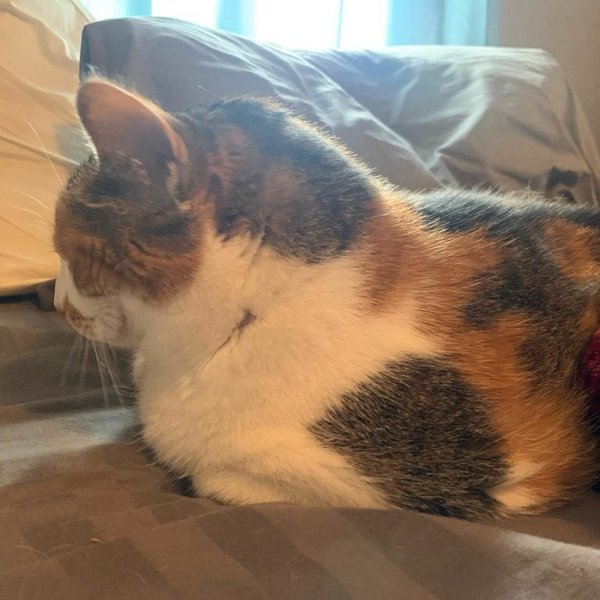
This is the neutral position for your cat’s ears. When they have their ears held forward, it means that your cat is confident and relaxed. It can also mean that your cat is feeling playful.
Since the ears forward position means that your kitty is in a good mood, this is the best time for you to pick your cat up for some cuddles, or to bring out their toys for some play.
13. Ears: Held Back And Flat
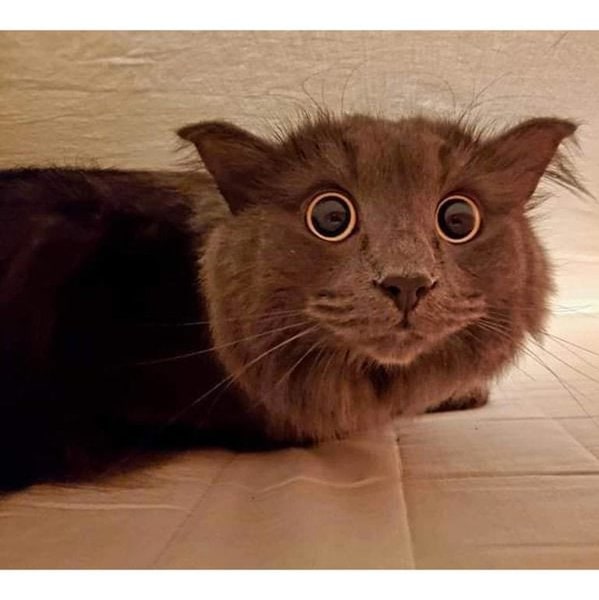
When your cat’s ears are held back, this is not a good sign. When you notice their ears are pointing backwards, this shows that your cat is feeling frightened, irritable or angry.
If the ears are held backwards and flat against the head, this is a warning sign that the cat is about to get aggressive. Avoid picking up or petting your cat when their ears are held back, since they can attack.
12. Ears: Straight And Erect
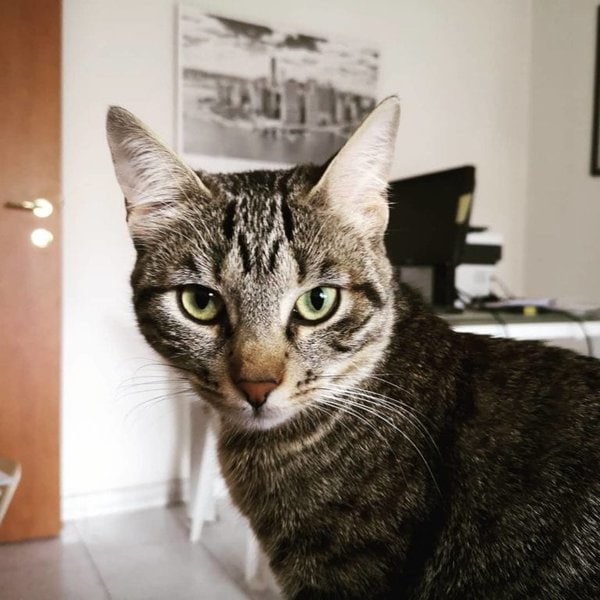
The ears held straight and erect position signifies that you cat is alert to something. Cats will hold this ear position when they are investing something or want to know what is happening within their environment.
Cats will also hold their ears in the straight and erect position when they are hunting. In this case, they are collecting as much information as possible to ensure the success of their hunt.
11. Eyes: Blinking
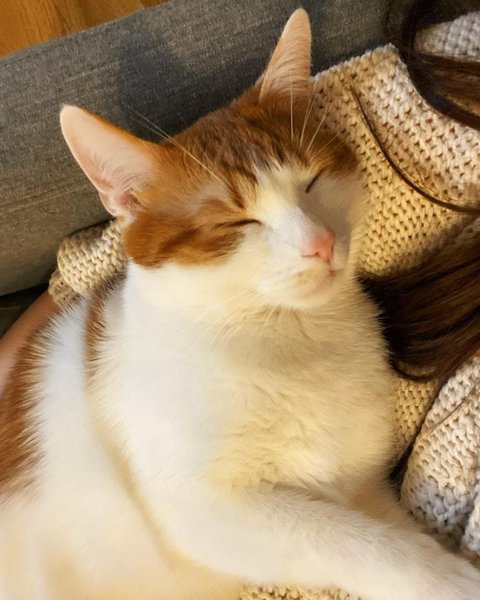
Your cat can also communicate to you by blinking. This is not the fast blink they do to clean their eyes, but rather a slow, deliberate blink.
This slow blink is your cat’s way of saying that they feel safe around you and that they trust you. It is a sign of affection. You can show your feline buddy that you love them back by returning the gesture and blinking at them.
10. Eyes: Dilated Pupils
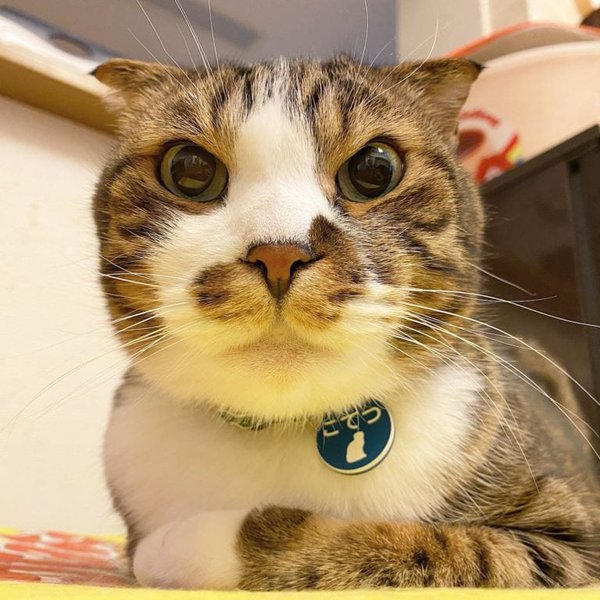
If you notice your kitty’s pupils are dilated, this can either mean that your cat is excited about something, or that your cat is surprised or anxious.
The best way to tell what dilated pupils mean on your cat is to look at any other signs they are exhibiting. For instance, if the dilated eyes are accompanied by a tense body posture, this is a sign that your kitty is anxious or fearful.
9. Eyes: Slit And Constricted
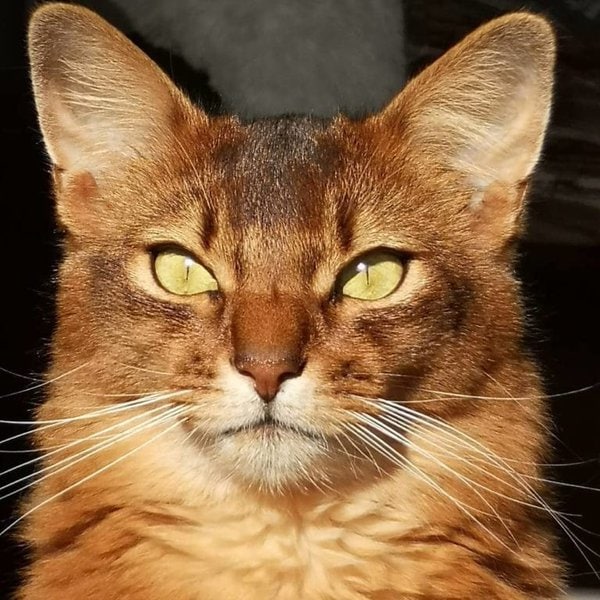
You’ll notice that your cat’s eyes sometimes become constricted and resemble narrow, dark slits. When this happens, this is a sign that your cat is in a state of arousal. While this can sometimes happen when due to pleasure, it usually happens when your kitty is angry or agitated.
In this state, there is a very high chance that your cat could get aggressive, so you should avoid trying to pick them up or snuggle them.
8. Vocalization: Hissing
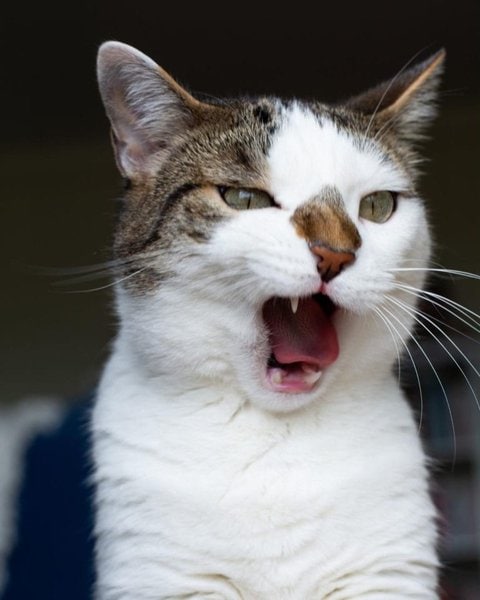
Most people assume that when cat’s hiss, this is a sign that they are about to get aggressive. In reality, however, cats hiss because they are feeling fearful or antagonized. By doing this, they are trying to scare whoever they consider to be a threat in order to avoid a physical confrontation.
Note, however, if they notice that hissing is not working, the cat will sometimes be forced to attack in a bid to defend themselves.
7. Vocalization: Growling
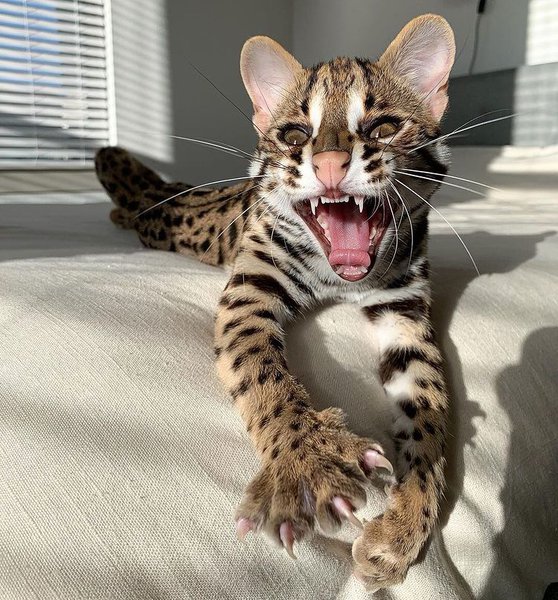
Growling is a cat’s way of saying that they are upset. Cats growl when they are feeling angry, annoyed, when they are frightened, or when they are about to get aggressive.
Cats use growling as a warning sign. What they are basically saying is that if the unwanted behavior continues, they’ll have no other choice but to get aggressive. Growling is usually accompanied by other signs like hissing, an arched back, and piloerection.
6. Vocalization: Meowing
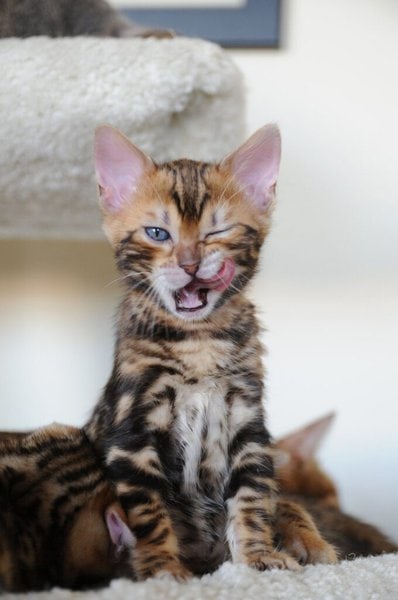
Humans recognize meowing more than any other form of communication from cats. Ironically, adult cats only use meowing to communicate with humans. They don’t use this form of communication with other cats.
Cats use meowing as a way of saying that they want something. Cat’s will meow when they want food, your attention, or even access to certain areas. Sometimes, cats will also meow when they are sick, or when they are feeling lonely.
5. Vocalization: Purring
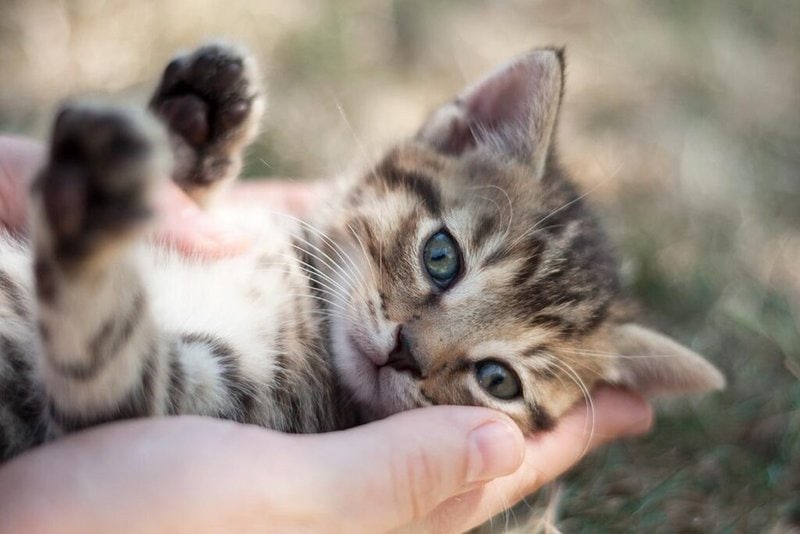
Every cat owner loves it when their cat purrs around them, but do you know what cats means when they purr? Purring is usually a cat’s way of saying that they are relaxed, calm, and content. For instance, your cat could purr when you stroke them, saying that they like the attention.
Sometimes, however, cat’s will also purr to express other emotions, such as when they are feeling hungry, when they are frightened, or when they’re injured.
4. Vocalization: Yowling
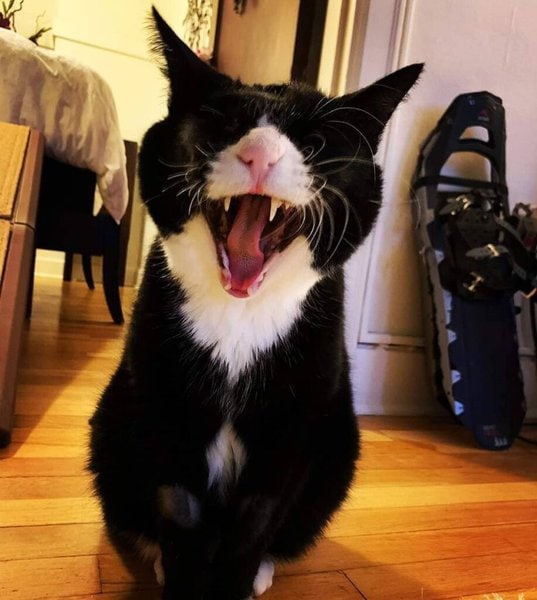
Yowling refers to when cats let out a long, drawn out vocalization that sounds like a moan. In most cases, cats use yowling to communicate with other cats, rather than their human companions.
The main reason why cats yowl is to call out for a mate. This usually happens in intact adult cats. Aside from signaling mating desire, cats also yowl when there is something in their environment they don’t like, or when they are ill.
3. Behavior: Kneading
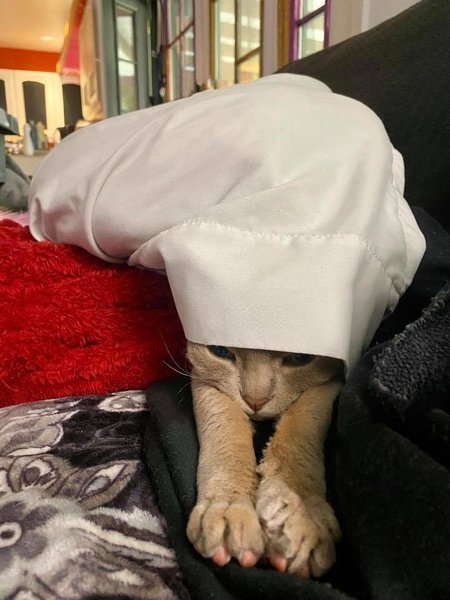
Cats use kneading to show that they are feeling comfortable and content. When kittens are born, they use kneading to stimulate their mother to produce milk for them. Even in adulthood, cats associate kneading with comfort.
You’ll notice that when a cat kneads your lap, or even some like a pile of clothes, they’ll often settle in for a nap. This shows that they are feeling calm, comfortable, and cozy.
2. Tail: Embraced
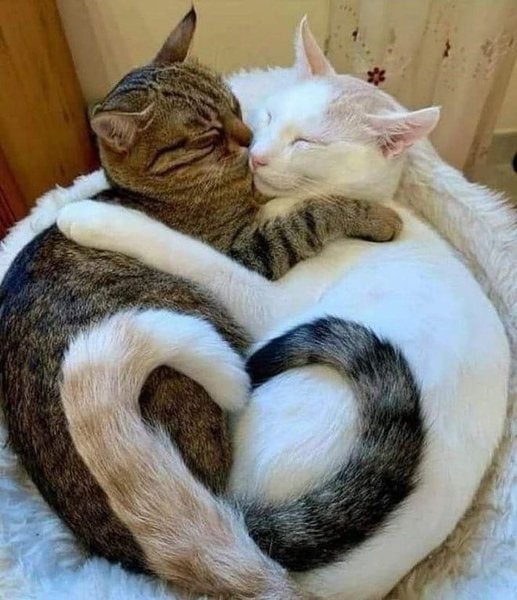
Just like you can wrap your arm around someone as a show of friendship, cats can do the same with their tails.
If you notice your cat’s tail wrapped in an embrace around another cat, or around your leg, this is your cat’s way of saying that they feel happy around you and share a strong bond with you. This is known as affiliative behavior, and is sometimes accompanied by other signs of affection like purring.
1. Tail: Curved
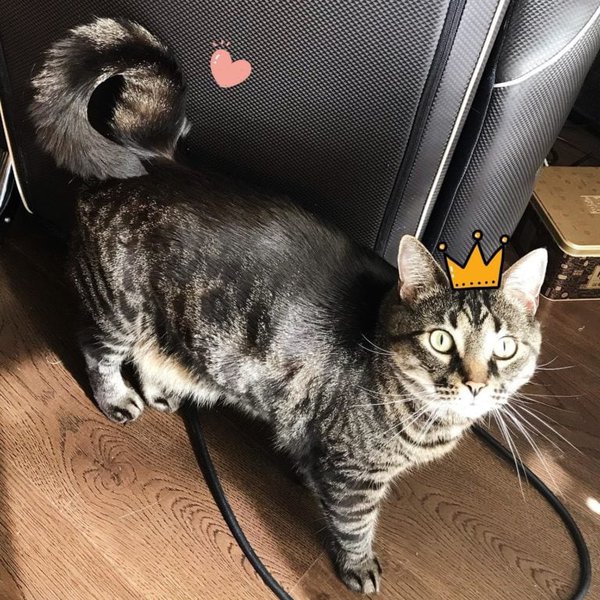
In this position, your cat’s tail is held upwards with a curve. When your cat holds their tail in this position, they’re basically telling you that they want to play.
If you notice your cat’s tail is curved, bring out their toys and enjoy some minutes of play with your furry buddy. Not only will your cat enjoy the play time, it will also provide an opportunity for the both of you to bond.
Related Questions
Do Cats Understand When You Speak To Them? The cognitive capabilities of cats do not allow them to be able to understand and interpret human language. However, when you talk to your cat, they can tell that this communication is directed to them, and can gather some information about what you’re communicating from your tone of voice, inflection, and body language.
Can You Hurt A Cat’s Feelings? Cats are capable of experiencing emotions, and therefore, it is possible to hurt your cat’s feelings. However, cats’ emotions don’t work in the same way ours do. For instance, if you do something your cat doesn’t like, they could get angry and growl at you, but they won’t blame you for their anger or hold a grudge against you.
How Long Does It Take For A Cat To Bond With You? The amount of time it takes for a cat to bond with you will depend on factors like the cat’s breed, personality, their age, socialization, as well as how you treat the feline. For some cats, bonding can take just a few days, while for others, it could take anywhere from several weeks to a few months.

